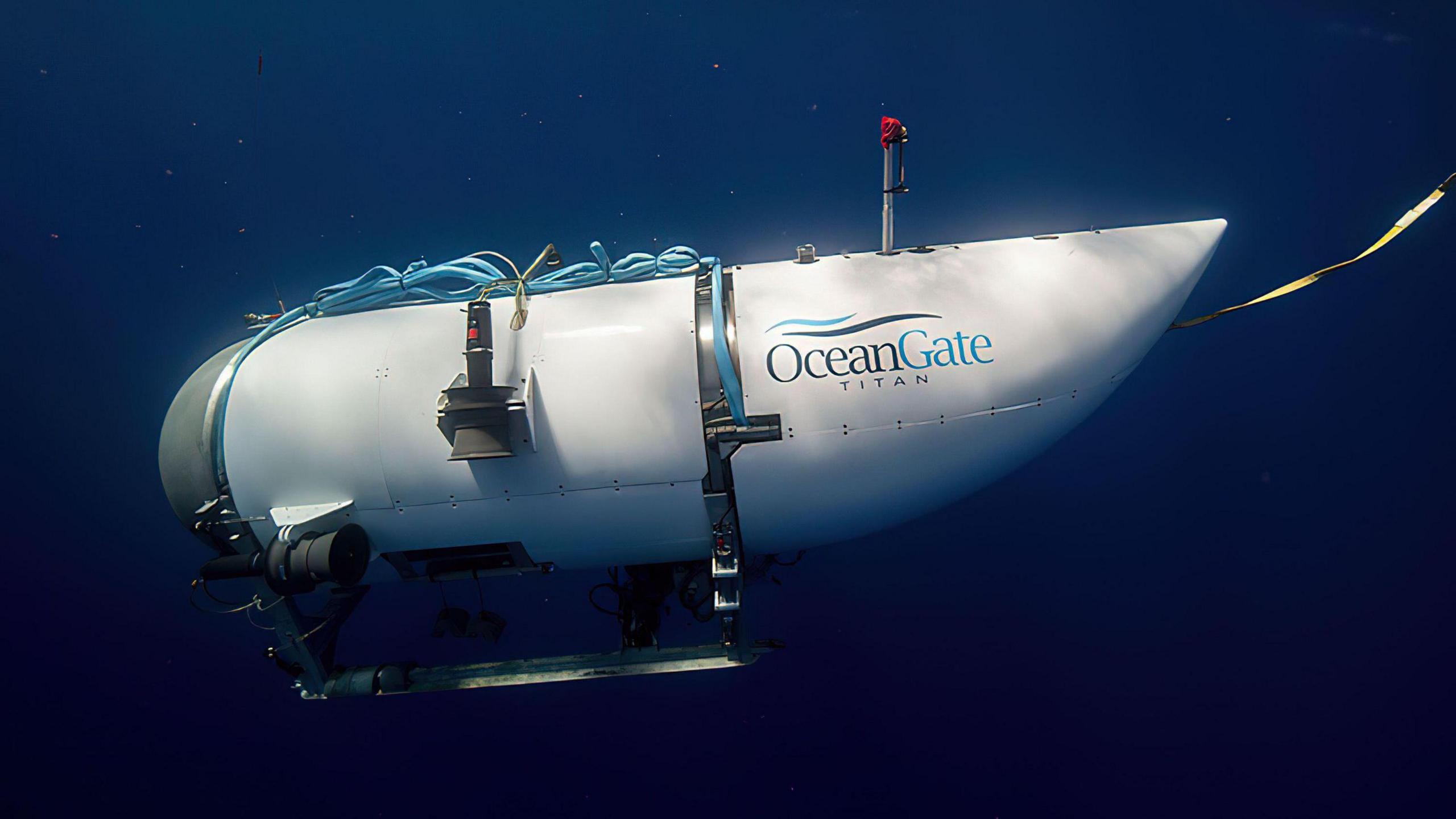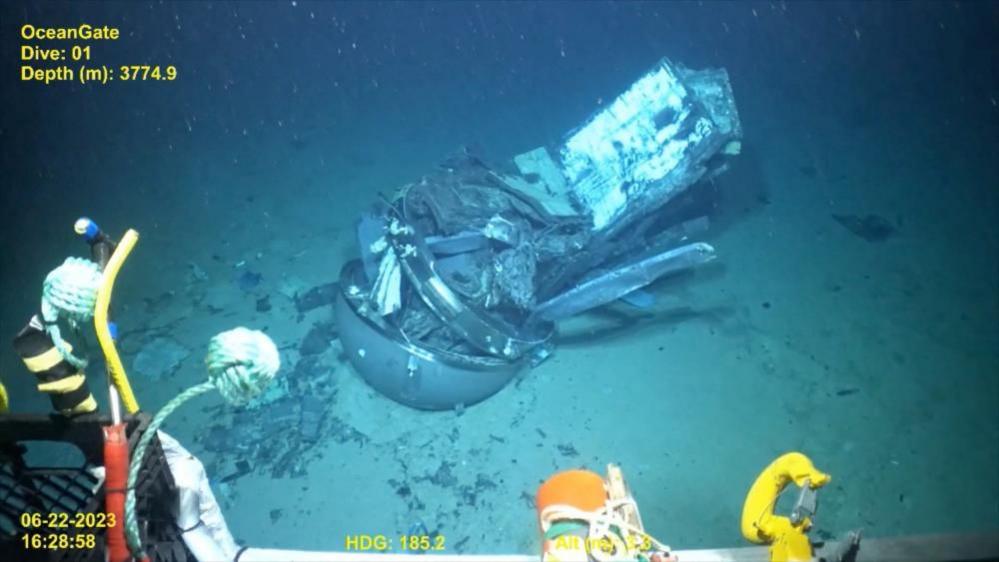Titan sub broke days before doomed dive, says science chief
Titan sub mission specialist: Without risk, the world would still be flat
- Published
A sub that imploded on a deadly voyage to the wreck of the Titanic, killing all five people aboard, had malfunctioned days before its final dive last year, a public inquiry has heard.
The former scientific director of OceanGate, the company behind the Titan sub, said the incident had caused passengers to "tumble about" and the craft to crash into bulkheading, leaving one passenger "hanging upside down" and others clinging on.
Steven Ross added that he did not know whether the Titan's hull was inspected for damage after the episode.
A US Coast Guard inquiry is hearing two weeks of evidence into the deadly implosion of the experimental submersible in June 2023.
Mr Ross said it took a support crew more than an hour to get the sub out of the water after the malfunction, days before its final trip.
Earlier on Thursday, a mission member aboard the sub's support vessel described watching the crew and passengers depart for the Titanic wreck last June, saying: "I saw five people smiling on the way to their journey."
"They were just happy to go, that’s the memory I have," Renata Rojas, who had joined the expedition as a volunteer, testified.
Ms Rojas, who was on a surface support vessel, said everything was "working very smoothly" before the sub began its descent.
But she told the probe that she remembered losing communications, asking colleagues: "We haven't heard from them, where are they?"
Ms Rojas told the inquiry that she was the "platform assistant" on the day of the dive, "mostly standing around until somebody needed help".
The Titan's implosion led to questions over the submersible's safety and design, and the materials used in its construction.
The inquiry earlier this week was told of the last messages sent from the sub as it descended towards the Titanic, with the crew stating "all good here" minutes before the implosion.
Ms Rojas said she was on the bridge of her own vessel as communications were lost, and that rescue protocol advised waiting an hour as the passengers might have been spending extra time exploring their destination.
The conversation then turned as the sub failed to resurface. Ms Rojas said she recalled conversations on the bridge about calling the Coast Guard.
"We went into 'go mode'," she said.
She said there were a number of rescue options available if the sub had been stuck on the ocean floor, including initiating a release manoeuvre or waiting for the tide to change. The Titan had 96 hours of life support onboard, she added.
However, she said there was nothing anyone in the sub could have done if the hull had failed.
Ms Rojas described a 2021 expedition in which she recalled how the dome fell off the submersible as it was being retrieved from the water.
She said when the submersible was being pulled back on to the main ship, the crew lost hold of it.
Ms Rojas said the dome vacuum of the sub broke.
"There was only, I think, two bolts or four bolts on the dome," she said.
"It started dripping, falling off," she added.
The incident led to crews installing 18 bolts on the dome for subsequent expeditions.
Ms Rojas, a self-described Titanic obsessive, told the inquiry she had never felt unsafe during her own dives.
"I found them to be very transparent about everything," she said about OceanGate staff briefings.
"I knew the risk and still decided to go."
The inquiry will continue into next week.

Related topics
- Published19 September 2024

- Published17 September 2024

- Published16 September 2024
